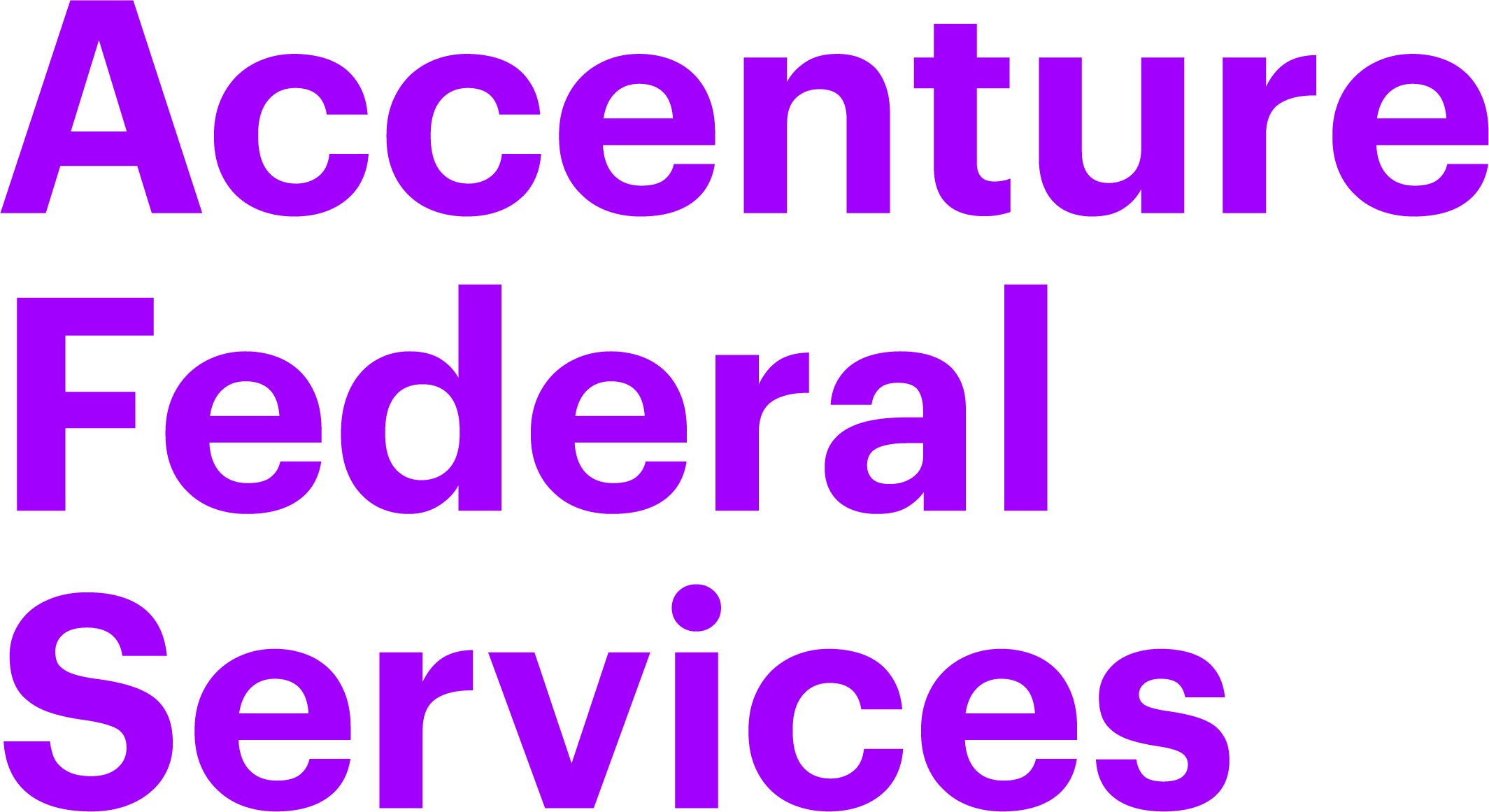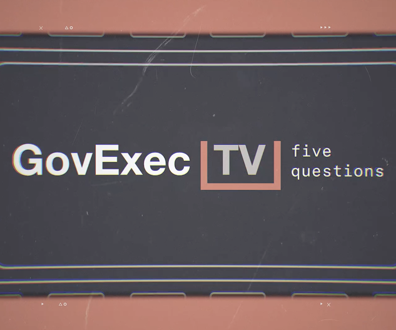sponsor content What's this?
![Flattening the curv, ... ]](https://cdn.govexec.com/media/img/cd/2021/03/12/iStock-1225070980/860x394.jpg?1626798365)
Flattening the curv, ... ] iStock/FreshSplash
Going Virtual: How Federal Agencies Are Embracing the Hybrid Workforce
As federal agencies look ahead to life after COVID-19, they are coming to terms with the fact that the office will look a lot different than it did before 2020. Here’s how personnel managers can fully embrace the future of work.
Presented by
Accenture Federal Services

For agencies across the federal government, the conventional workplace experience is becoming obsolete — and in many ways that’s likely to be a good thing.
Before the pandemic, the ability to recruit, hire and support remote employees was limited and nowhere near the scale needed to stand up a virtual workforce across multiple agencies and nationwide. But today, agencies are working to support a highly disparate workforce, as remote work has become a new way of life for millions of employees. It’s a change in experience and expectations that will alter the nature of work far beyond the current crisis.
The move to an increasingly virtual workplace has emphasized the need for agencies to adopt modern HR approaches that prioritize the candidate and employee experience. By building on proven commercial best practices and harnessing the possibilities of new tools and technologies, HR leaders can play a pivotal role in serving their employees and the mission. They can also help meet growing calls for a more diverse, equitable and inclusive work environment.
“As we start to look at a post-pandemic workforce, we shouldn’t just be looking for a ‘return to normal,’” says Kristen Vaughan, managing director and human capital lead at Accenture Federal Services. “We should be looking at how we can return to something even better.”
Agencies Embrace the Office of the Future
Pre-pandemic, new employees depended heavily on shoulder-to-shoulder engagement in the office, with more seasoned workers to help them get up-to-speed. Now, that knowledge transfer has to happen in different ways, while still prioritizing a sense of team-building and camaraderie, says Jen Sadosky, senior manager for human capital at Accenture Federal Services.
Agencies need to embrace these remote ways of working by formalizing temporary policies which proved effective to their business and desirable to their employees. Agencies like the U.S. Citizenship and Immigration Services (USCIS) have acted quickly to rethink existing telework policy and develop a path to fully remote employment for most positions, eliminating geographical ties to brick-and-mortar worksites.
While improving the existing employee experience and desirability to the next generation of employees, USCIS is working with the General Services Administration (GSA) to drastically reduce its physical facility presence, estimating savings of tens of millions of dollars annually per site.
“For a while, when the pandemic first hit, onboarding trainings completely stopped in some agencies simply because they didn’t have policies or technologies in place to facilitate it,” Sadosky says. “Now, those are starting to come back online as these agencies begin moving their HR tools to new technologies that can support remote workforce onboarding and management.”
A Modern Candidate Experience
Job interviews and onboarding have traditionally been an in-person requirement for most positions. But with a largely remote workforce and emerging collaboration technologies, federal agencies are realizing that some online processes are actually more efficient. There’s even been a shift toward virtual interviewing that many believe will outlive the pandemic.
“Yes, you may be missing out on a little bit of body language, but you can still get a very good read on a person, and you can have their resume pulled up on one screen while still being able to keep eye contact with them so that the interviewee feels more comfortable during the process,” says Vaughan.
Virtual interviewing also allows for people to be considered for jobs no matter where they are, meaning the pool of candidates is larger and the interviewing costs are lower than they used to be (no longer requiring organizations to pay for a candidate's transportation or lodging, for instance).
Beyond participation in virtual interviews, new candidates can also complete assessments online — another advantage to HR managers. These online assessments can help identify the candidates that align most closely with an agency’s needs, competencies and position requirements. Assessments can also be conducted in various times in the recruitment and hiring process.
“You can actually be more efficient and it’s more convenient for everyone with a virtual hiring process,” Sadosky says.
Postings for remote jobs result in a much larger talent pipeline and a significant uptick in the number of applications received. As a result, agencies are seeing an increased need to quickly and easily identify top candidates. That’s where emerging technologies like advanced analytics and artificial intelligence come into play.
“Taking away the obstacles to applying opens the aperture for more qualifying candidates, but that necessitates putting the right tools in place so that we don’t overwhelm the system,” Vaughan says. “Already, it takes the federal government something like 100 days for every hire, whereas it only takes an average of 45 days in the private sector. The right tools will mean that time doesn’t become even longer.”
Much like Amazon and other retail sites that use AI and predictive analytics to target customers based on their interests, there is a new demand for dashboards and tools that focus on personalizing the candidate experience — all while allowing HR managers to sift through large amounts of data to get to decisions faster.
“Candidate and employee experience is huge,” Sadosky says. “Implementing technology that makes data more readily available, and having a strategy for how to make that data actionable for key leaders, empowers better and faster decision making.”
A Path Forward for Remote Government
When it comes to enabling a remote government workforce, one critical component of success will be the ability to swiftly implement new policies while leveraging technology.
“This past winter, we were still announcing the closure of entire offices for snow days when almost everyone was already at home and able to continue working,” says Maurine Fanguy, managing director and Homeland Security client account lead at Accenture Federal Services. “The reason that happens is because a policy within an agency hasn’t caught up with the realities of this shift in remote working.”
It has been a year since agencies moved to an almost fully remote workforce, and the time is ripe for taking stock of lessons learned. This means implementing changes so agencies can seamlessly transition back to a hybrid model as things begin to open back up.
“The 8-hour workday is gone,” Fanguy says. “Everyone has been impacted, and you have to be accommodating of both the person working at home with children needing help with school and the person who is living alone and needs more interaction to feel bonded to a team. You have to gel those needs together to still find ways to facilitate relationship development within your team.”
Agencies are adopting new tools that will improve how they communicate within a hybrid workforce. For Accenture, that means helping government customers implement these technologies and address other challenges that may arise.
“Change management practices are still required when we implement these new tools,” Sadosky says. “We include engaging practices to keep stakeholders aware, informed, and bought into new changes. We also have to help them adopt technology to improve mission outcomes. more user-centric solutions that tailor user experience. We’re adding [software-as-a-service] learning tools for training and helping agencies improve HR reporting and data analytics through visualizations and insights dashboards. It’s going to be HR that has to track things like workforce location and COVID vaccinations going forward.”
The new demands have also led to agencies having to rethink and restructure their cultural and Diversity, Equity, and Inclusion (DEI) programs in an environment where employees aren’t centrally located. “It’s about creating a sense of community and inclusion even in a virtual world, which requires much more planning and effort,” says Vaughan.
Even with the growing awareness of electronic fatigue from online meetings, the advantages of a remote workforce are myriad, and many forced into working from home a year ago no longer want to return to a traditional office environment. In fact, a report released by Forrester in late 2020 shows more than18 million American workers will continue working remotely after the pandemic.
“The pandemic caused leadership within government agencies to focus on being truly human, keeping an eye on the workforce, understanding their feedback and incorporating that into employee programs,” Sadosky says. “Agencies have been forced to truly listen to their workforce and make change quickly to meet those needs. Those are all improvements that we see continuing to be important in the years ahead.”
“We used to focus on engagement and wellness. It used to be about work-life balance,” Fanguy adds. “The pandemic made it about balancing life.”
This content is made possible by our sponsor, Accenture. The editorial staff was not involved in its preparation.
NEXT STORY: Scaling Mission-Oriented Change in the Golden Age of Innovation






